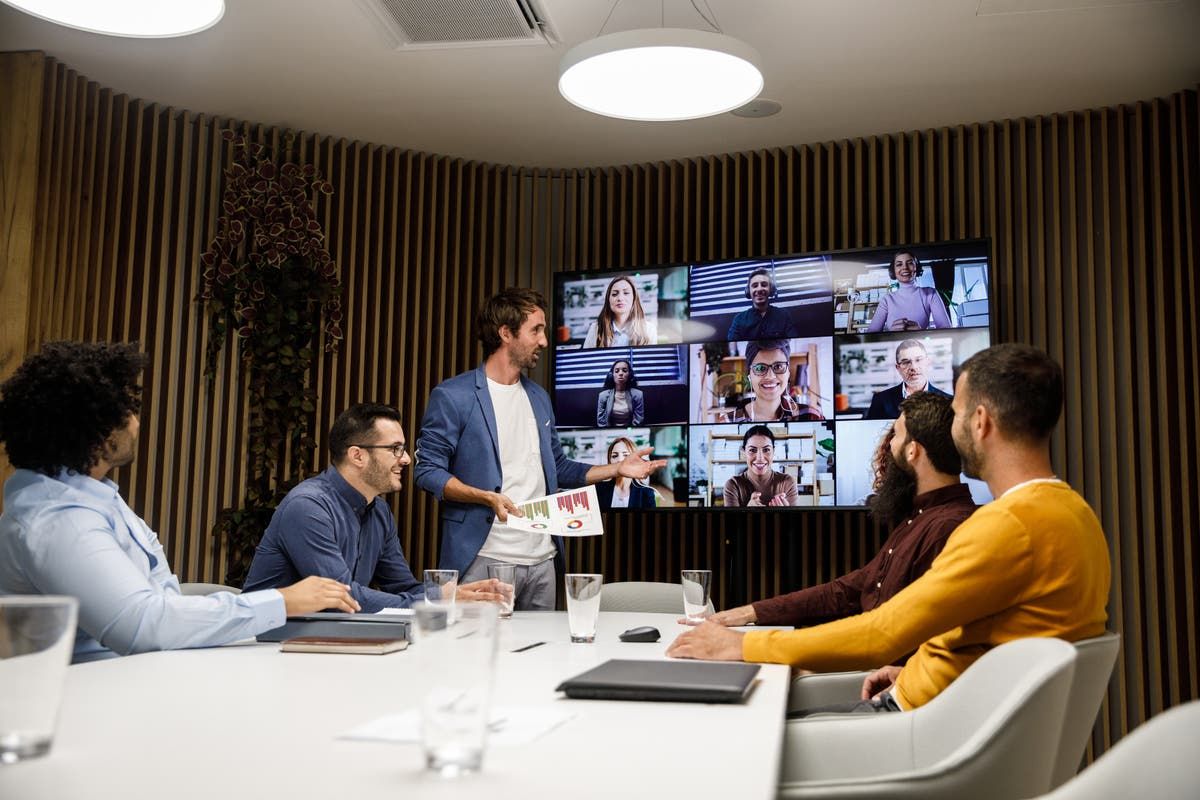Crestron is a Business Reporter customer.
In late 2022, Crestron, a global leader in technology solutions, undertook a research project that was summarized in a report: Addressing the modern workplace in numbers. The report's key findings revealed that the hybrid work model, with its combination of in-person and remote employees (or students, teachers, clients, etc.), had become a global element in business, education and government applications.
He also revealed that this “hybrid tenure” brought with it certain challenges, one of which was employee engagement.
“At the beginning of the pandemic, there was a huge rush to get everyone connected,” says Sam Kennedy, senior director of product marketing at Crestron. Cameras and microphones were taped to walls without much attention to audio or image quality, and remote workers often resorted to company-paid DIY solutions they could order online.
As lockdowns eased and more and more people returned to the office, it became clear that this hodgepodge approach was not delivering the necessary results. Disengaged collaborators are simply not productive.
As the report noted in its main conclusions:
- There is room for improvement in current collaborative technologies offered to employees, and signs show that IT teams are taking steps to invest in and experiment with new technologies like intelligent video.
- Physical workplaces must change to encourage hybrid collaboration and create equity among colleagues.
Working towards more equitable meetings
The report aligned with other research That revealed that both remote workers and their in-person counterparts felt disconnected from each other. Many of the “quick and dirty” video conferencing solutions implemented during the pandemic did not give collaborators a complete picture of their peers: they were missing the subtleties of gestures and expressions, the nuances and non-verbal cues that humans bring. naturally to collaborative efforts. in digital translation.
Solving those problems is paramount, as Lauren Simmen, director of product marketing at Crestron, points out. explained on the Crestron blog. “The key to a great remote meeting experience starts in the room where your in-person attendees are sitting, believe it or not,” Simmen says. “We've all seen remote workers disengage from a meeting because they don't feel connected to the entire conversation,” he adds.
When a remote worker is presented with what is best described as a “bowling alley view,” with a single camera positioned at one end of a conference table, that disconnect is likely to occur.
“When you're remote, it can be really difficult to see everyone at that table, read body language, see those non-verbal cues that are so important; those same things help you understand when is the right time to do it. offer an interjection,” explains Simmen.
The same type of engagement issues apply to in-person attendees: if one can't see their remote counterparts, that meeting will be less than effective.
The challenges of split hours
Hybrid working means just that: there are a large number of employees who spend part of their time working at home and the rest working in person.
This means it is imperative that work experience be consistent, regardless of a person's location.
The point was made clear in a opening speech at the Digital Workplace Experience Summit, hosted by Reworked. How do we blend the remote work experience when a hybrid employee comes into the office for critical in-person collaborations? How can we “make the journey worth it”?
Kennedy suggests that, primarily, there is an employee perception that needs to be understood by those facing that problem: “Work is something I do, not a place I go.”
That concept informs what is critical to making the hybrid workplace work. “We have to offer a frictionless experience to the employee who comes to the office,” says Kennedy. “We need to provide them with a one-touch ‘join a meeting’ solution, whether they are remote or attending a meeting in person.”
The answer in a single package
What is needed are intelligent video solutions that are effective and easy to use. To that end, Crestron developed a multi-camera system that tracks individual speakers as they contribute to a meeting: the Automate VX™ Voice activated speaker tracking solution.
Automate VX technology employs multiple cameras with optical zoom and voice-activated switching to ensure that remote participants enjoy a clear, crisp view of everyone in the room, and that in-person participants never have to think about where to look to follow the action. conversation.
Intelligent video solutions, such as Automate VX technology, offer what is called “equal pixel spacing,” meaning each collaborator can see both in-person and remote people equally, keeping all meeting participants interested.
Specific benefits of the Automate VX solution include:
- Automatic Hands-Free Operation: Powered by intelligent video software, the system takes input from microphones in the room, directs a camera to focus on whoever is speaking, and automatically switches to that camera.
- Optical zoom cameras that provide a better image than digital zoom: Optical zoom functions use the lens to magnify an image, improving its sharpness. (Digital zoom functions enlarge and crop the image, reducing its clarity.)
- The ability to capture critical non-verbal cues: Those optical zoom cameras provide framed close-up images of the active speaker so remote participants can see every gesture and facial expression.
- A comprehensive view of the room: The solution can include a broader view of the entire meeting space to help remote collaborators understand the context of the space and the reactions of participants during a video conferencing session.
- A broadcast-quality experience: Dynamic camera switching and customizable compositing features provide multiple camera angles.
- Platform-independent flexibility: the Automate VX solution is certified for Microsoft Teams® software and is compatible with Zoom Rooms® software, or any other conferencing platform.
The result is the most natural-looking environment for everyone in a hybrid meeting, resulting in increased engagement and decreased “screen fatigue.”
“The goal is to minimize the additional emotional and physical toll it takes on an individual to compensate for the unnatural environment,” says Lauren Simmen. “And Automate VX does just that.”
To access a world of data that can help IT teams and specifiers understand the challenges presented by the hybrid work environment and turn those challenges into opportunities, download the Tackling the Modern Workplace by the Numbers Report.









